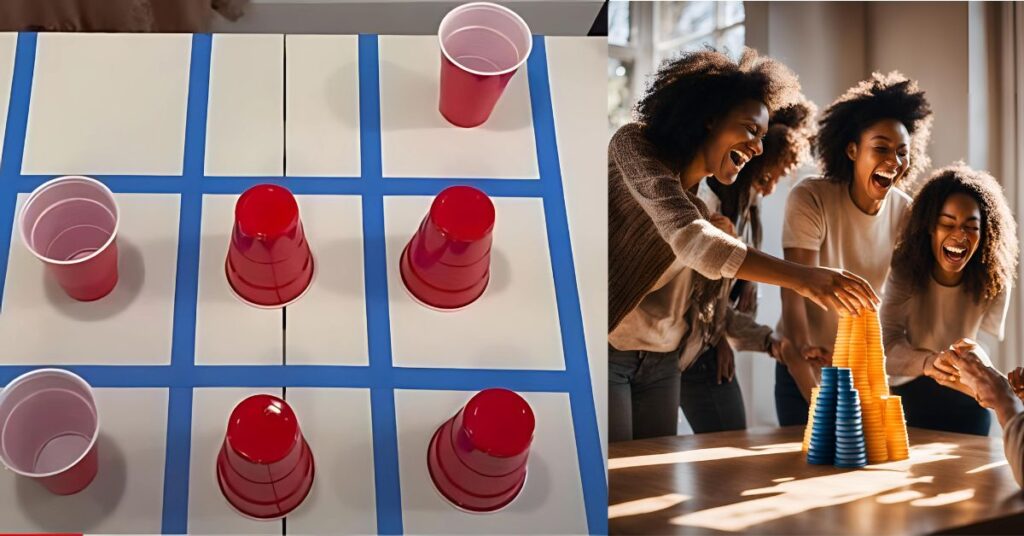Introduction
Youth groups thrive on fun, energy, and connection, and what better way to foster that than with exciting, competitive games? When it comes to engaging a crowd of eager young people, the right activities can turn a regular gathering into a memorable experience filled with laughter and teamwork.
Sometimes, all you need to get the party started is something as simple as a stack of Solo cups. With just a few cups, you can create dynamic, fast-paced games that encourage competition, test coordination, and keep everyone entertained. These cup games are not only easy to set up, but they also bring out the best in friendly rivalry, making every round an opportunity for excitement.
But the question is: Are cup games truly exciting for youth groups? In this blog, we’ll explore several fun and easy cup-based games that will energize your group, highlighting how they encourage teamwork, spark competitive spirit, and create unforgettable moments.
2. Why Cup Games?
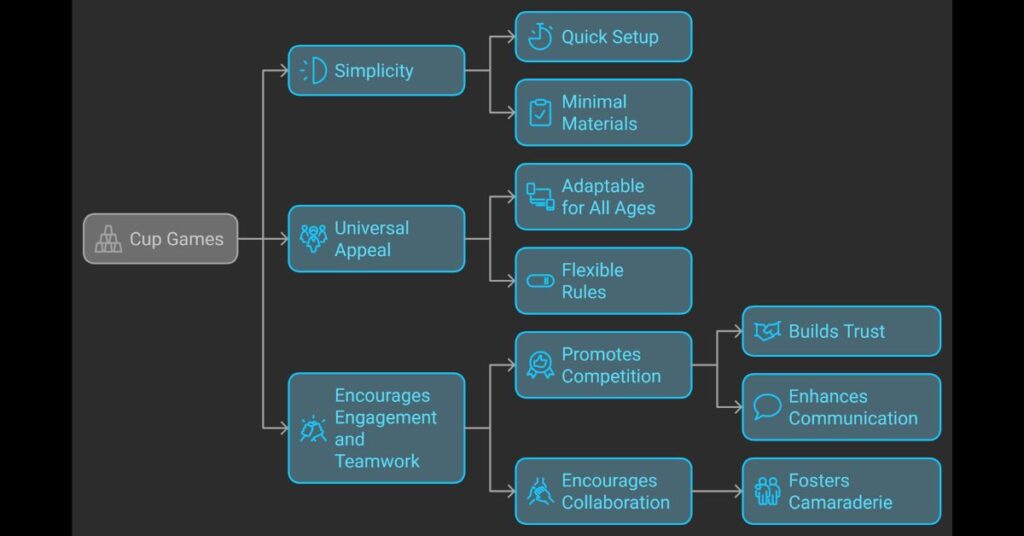
2.1 Ease of Setup
One of the biggest advantages of cup games is their simplicity. All you need are a few Solo cups, and you’re ready to create a variety of games that can fit any space or group size. Whether you’re hosting a small gathering or a large youth event, cup games are quick to set up and require minimal materials, making them an ideal choice when resources or time are limited.
2.2 Universal Appeal
Cup games have a universal appeal because they are incredibly versatile. They can be adapted to fit different age groups and skill levels, making them perfect for a mixed crowd. Whether the players are elementary school kids, teens, or young adults, everyone can get involved and enjoy the fun. This flexibility allows leaders to tweak the rules or difficulty based on the group dynamics, ensuring everyone stays engaged.
2.3 Encourages Engagement and Teamwork
What makes cup games stand out is how they effortlessly promote both competition and teamwork. Many of the games encourage participants to work together, building trust and communication while fostering a sense of camaraderie. At the same time, the competitive nature of some games adds an exciting edge, motivating everyone to give their best. In short, cup games strike the perfect balance between engaging the group and sparking a healthy, competitive spirit.
3. Top 5 Exciting Cup Games
3.1 Stack Attack
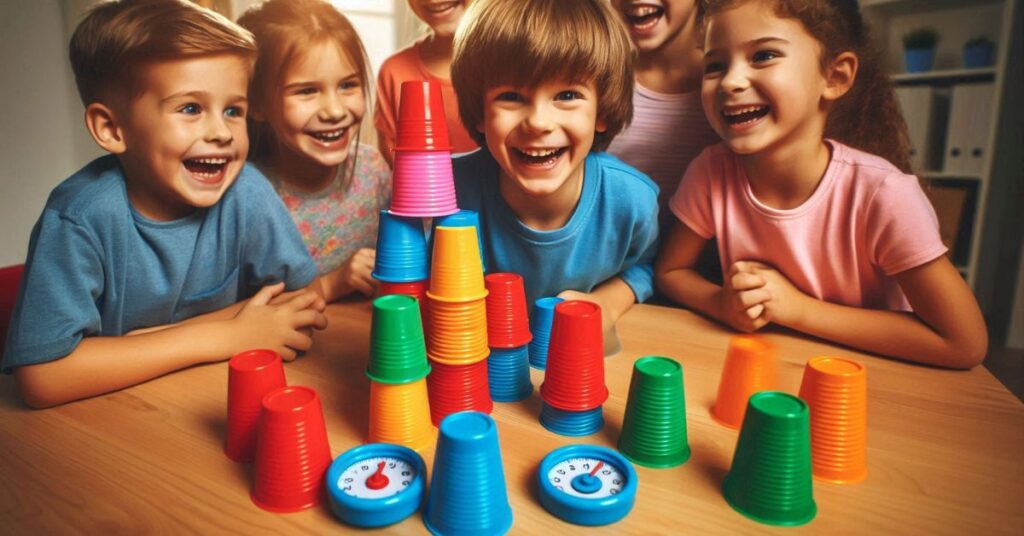
Description: Stack Attack is a fast-paced game where participants race to stack and unstack a set of Solo cups as quickly as possible.
Why it’s exciting: The thrill of speed and the competitive element make this game a hit. Watching the cups go up and down in a flurry of motion keeps everyone on their toes.
Benefits: Stack Attack promotes quick coordination and teamwork, especially when played in teams. It helps players improve their reflexes and ability to work under pressure.
3.2 Tic Tac Toe Cup Flip
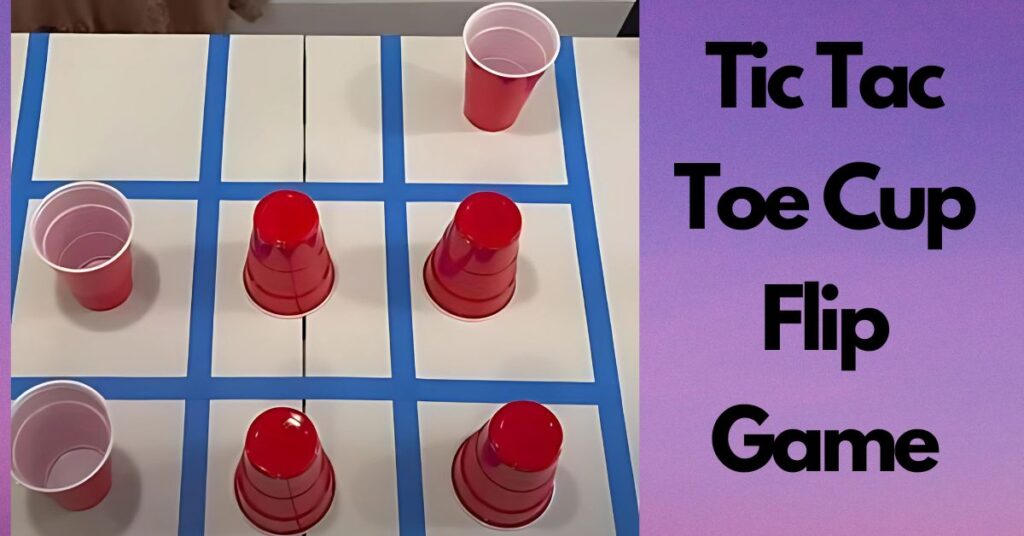
How to play: This game adds a twist to the traditional Tic Tac Toe. Players flip cups from the edge of the table, trying to land them upright. If successful, they can place the cup on the Tic Tac Toe grid. The first to get three cups in a row wins.
What makes it exciting: The combination of strategy and skill in flipping the cups adds a layer of unpredictability and fun. It’s not just about placing your pieces—it’s about mastering the flip!
Benefits: This game develops cognitive skills, as participants must strategize while also honing their hand-eye coordination.
3.3 Tug of Cup

Game instructions: In Tug of Cup, players flip cups and aim to move them towards their side of the table. Whenever a cup lands successfully, it’s advanced toward a taped line. The first to get their cup past the line wins.
Excitement factor: The tug-of-war mechanics, with players battling to keep the cup from crossing into enemy territory, creates a thrilling back-and-forth dynamic.
Benefits: This game combines physical dexterity with mental engagement, as players must stay focused and react quickly to advance their cup.
3.4 Cup Stacking

Overview of the classic game: Cup stacking involves creating a pyramid of cups and then quickly dismantling it back into a single stack. The challenge is to complete the task faster than your opponent.
What adds excitement: The precision required to build and take down the cups, paired with the race against time, makes this game both challenging and exhilarating.
Benefits: Cup stacking improves focus, concentration, and hand-eye coordination, making it a fun yet beneficial game for youth groups.
3.5 Sort That Cup
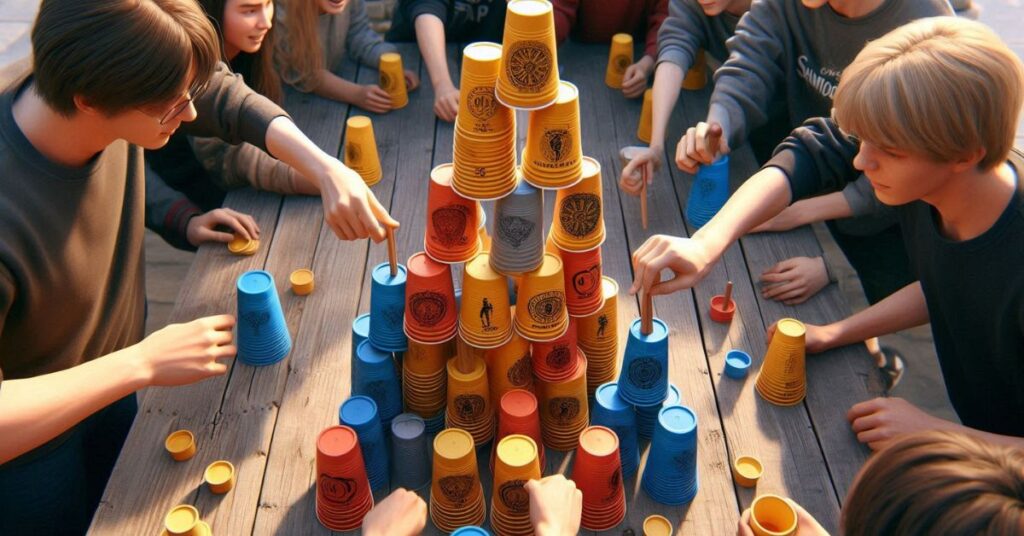
Game mechanics: Players must race to sort through a stack of cups, each marked in some way, to get a specific marked cup to the top.
Why it’s fun: The need for quick thinking and fast hands makes this game exciting, as participants scramble to outmaneuver each other in getting the marked cup to the top first.
Benefits: Sort That Cup enhances agility, concentration, and decision-making skills, making it a great choice for both mental and physical development.
4. How These Games Create a Memorable Experience
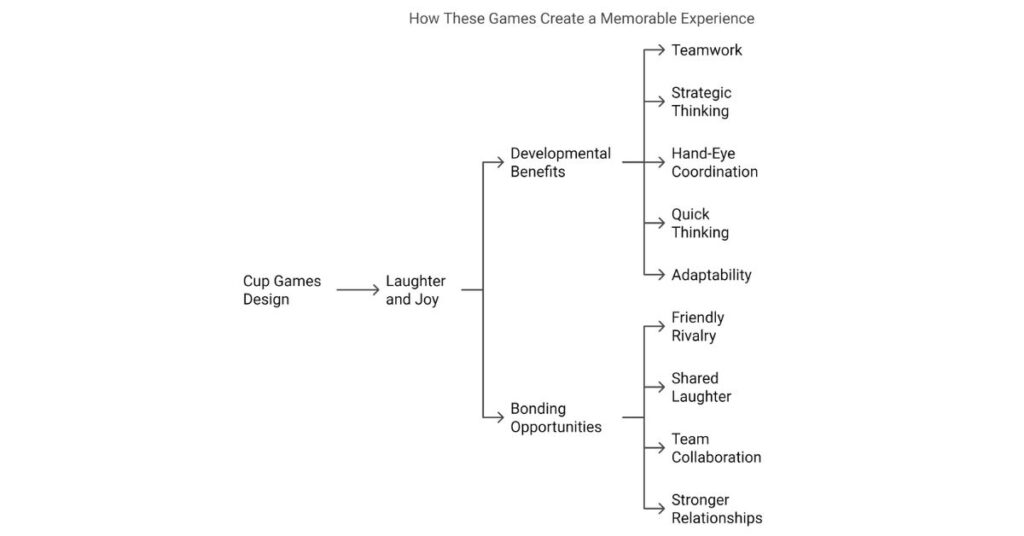
4.1 Encouraging Laughter and Fun
These cup games are designed to be light-hearted and full of energy, sparking laughter and joy in the group. The simplicity of the games allows participants to relax, have fun, and enjoy the shared experience. Whether it’s the unexpected flips in Tic Tac Toe or the fast-paced stacking in Stack Attack, each game is bound to create moments that bring smiles and laughter, building a positive atmosphere that everyone can enjoy.
4.2 Developing Skills
Beyond fun, these games offer developmental benefits, helping youth enhance essential skills. The various challenges promote teamwork, requiring players to work together to achieve goals. Games like Tic Tac Toe Cup Flip and Tug of Cup also push participants to think strategically and improve hand-eye coordination. The fast-paced nature of the games encourages quick thinking and adaptability, all while maintaining an engaging environment.
4.3 Creating Bonding Opportunities
Cup games aren’t just about competition—they provide a platform for youth to bond and connect with one another. The friendly rivalry, shared laughter, and team collaboration foster a sense of camaraderie. Through these games, participants build stronger relationships, learn how to support each other, and create lasting memories together, forming deeper connections that extend beyond the activities themselves.
5. Adaptability of Cup Games

5.1 Different Themes or Settings
One of the greatest strengths of cup games is their versatility. They can be easily tailored to fit different themes, whether it’s for a youth ministry retreat, a school event, or even a birthday party. With just a few tweaks, these games can reflect the overall theme of the event or the goals of the group, making them a perfect fit for any occasion. Whether you’re outdoors, in a gym, or in a small room, these games can adapt to any setting.
5.2 Scalable Difficulty
Cup games are highly adaptable in terms of difficulty, making them accessible for all age groups. For younger children, the rules can be simplified to focus more on fun and less on precision. For older teens or competitive groups, you can increase the level of challenge by adding timed rounds, using more complex stacking patterns, or introducing new rules. This flexibility allows organizers to match the energy and skill level of the participants, ensuring everyone is engaged and having fun.
6. Conclusion
Cup games offer the perfect blend of versatility, excitement, and engagement for youth groups. Whether it’s the fast-paced competition of Stack Attack, the strategic skill of Tic Tac Toe Cup Flip, or the teamwork required in Tug of Cup, these games bring out the best in group dynamics. They’re easy to set up, adaptable for any age or setting, and filled with opportunities for laughter, skill-building, and bonding.
So, are cup games exciting for youth groups? Absolutely! They are a simple yet effective way to foster enthusiasm and connection among young participants.
Now it’s your turn! Try out these cup games at your next youth gathering and see the excitement unfold. Don’t forget to subscribe for more creative game ideas and group activities that will keep the fun going!
FAQ Section
1. What makes cup games suitable for youth groups?
Cup games are perfect for youth groups because they are easy to set up, require minimal equipment (just Solo cups), and can be played by groups of any size. They also promote healthy competition, teamwork, and fun, making them ideal for engaging young participants.
2. Can these cup games be played with younger children or adults?
Yes! Cup games are versatile and can be easily adapted for different age groups. You can simplify or increase the difficulty of the games based on the participants’ ages and skill levels, making them suitable for both younger children and adults.
3. How much preparation is needed to set up these games?
The beauty of cup games is that they require very little preparation. All you need are Solo cups and a flat surface. Most games can be set up in a matter of minutes, making them great for last-minute gatherings or impromptu events.
4. Can these games be used in other settings besides youth groups?
Absolutely! These cup games can be played in a variety of settings, including schools, parties, family gatherings, and even corporate team-building events. The flexibility of these games allows them to fit any theme or occasion.
5. What are the benefits of playing cup games with youth?
Cup games encourage physical activity, strategic thinking, and teamwork. They also foster a fun, relaxed environment that helps youth bond with one another while developing skills like hand-eye coordination, quick thinking, and communication.
6. How can I make cup games more challenging for older or more competitive groups?
You can scale the difficulty by increasing the number of cups, setting stricter time limits, or adding additional rules to the games. This allows you to create more challenging versions of the same games to keep older or more competitive groups engaged.
7. What if I don’t have enough space for these games?
Most cup games don’t require a large amount of space. A flat table or floor area is usually all you need. If space is tight, you can adjust the rules or modify the game setup to suit the available room.
8. How do cup games help with youth bonding?
By encouraging teamwork and friendly competition, cup games create opportunities for youth to interact, laugh, and work together. These shared experiences help build stronger relationships and create lasting memories within the group.
